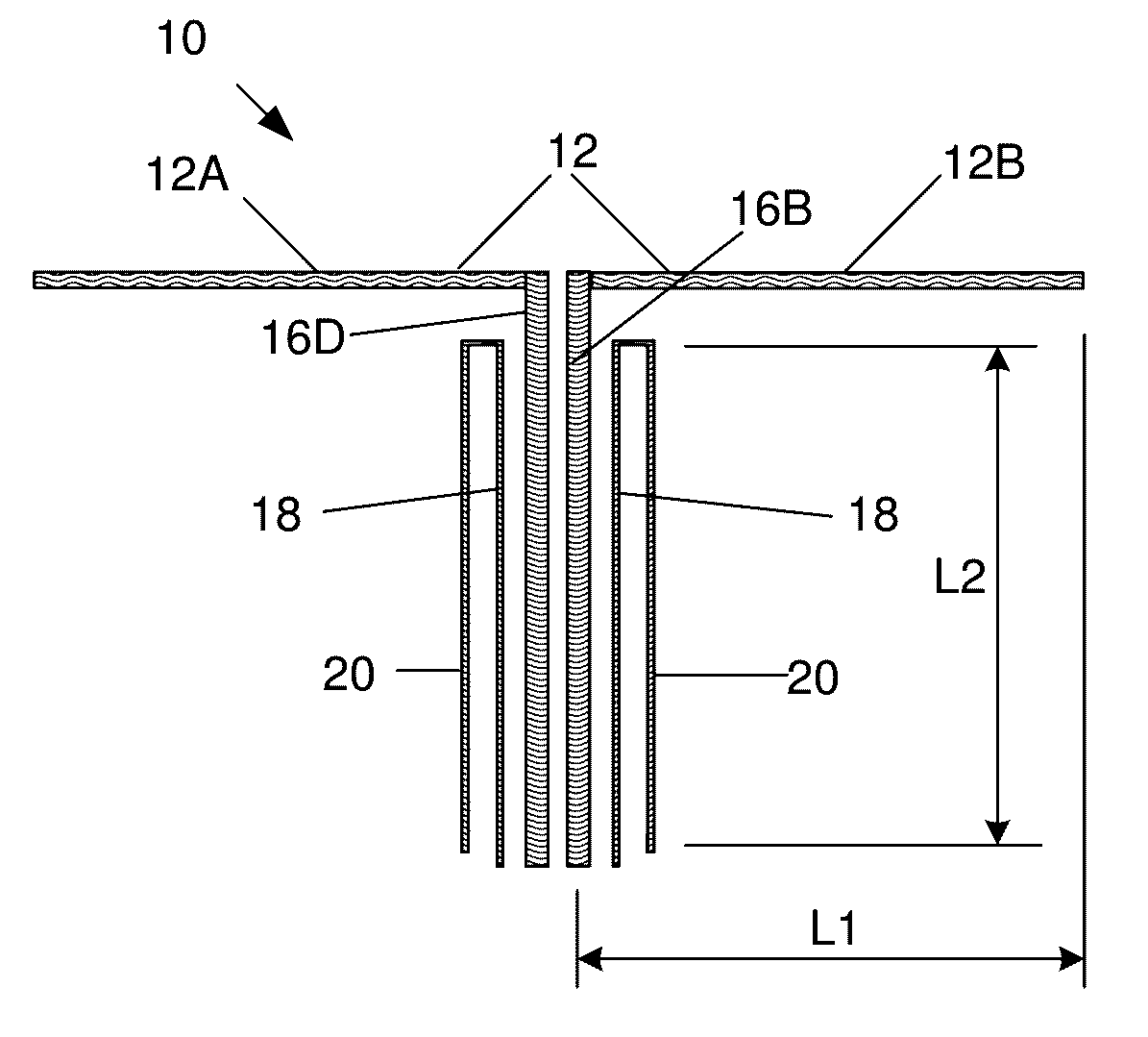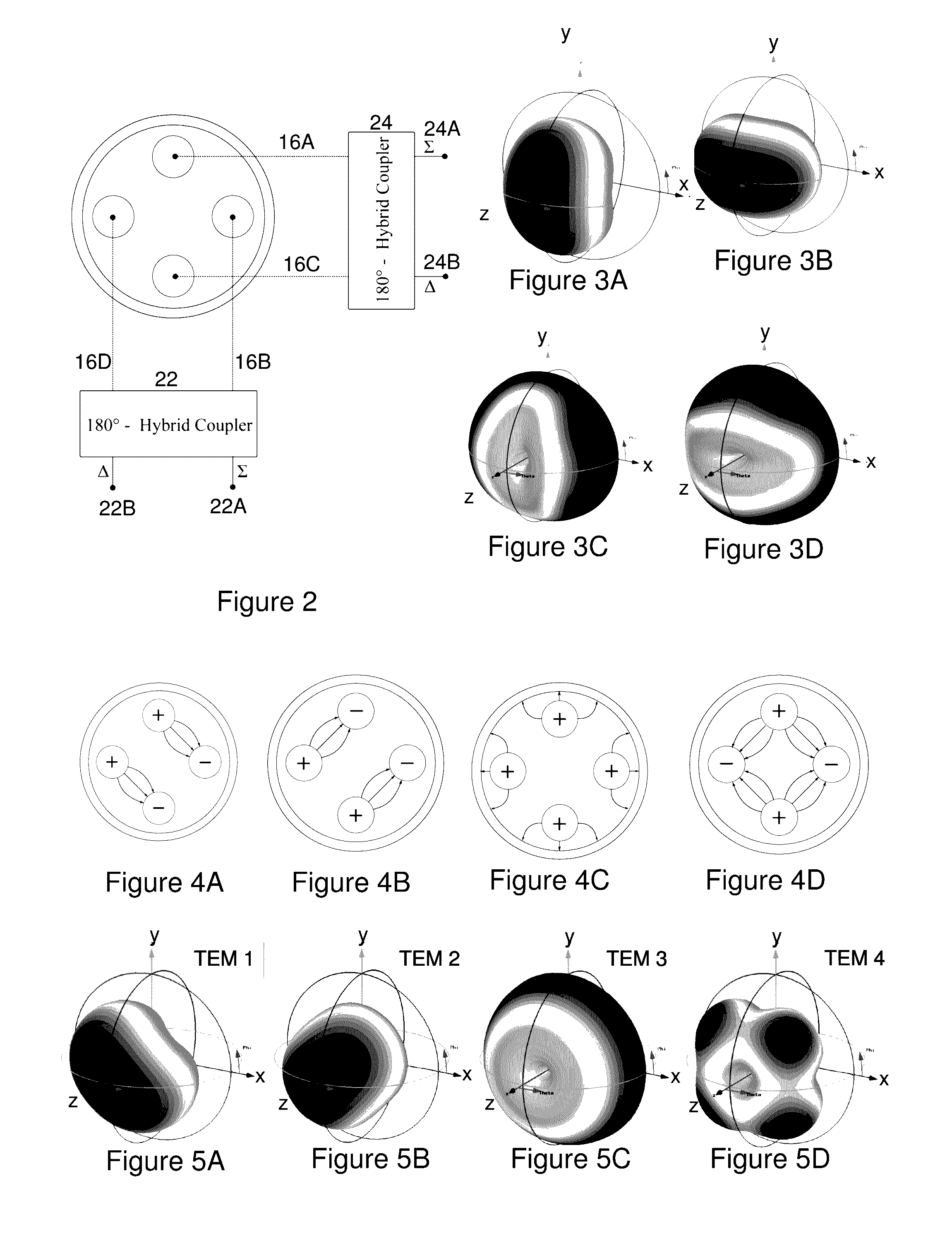Multi-mode composite antenna
- Summary
- Abstract
- Description
- Claims
- Application Information
AI Technical Summary
Benefits of technology
Problems solved by technology
Method used
Image
Examples
first embodiment
[0047]FIGS. 1A to 1C illustrate a multi-mode composite antenna (10) according to the invention. The antenna (10) includes first and second dipole elements (12, 14) which each have a pair of collinear arms (12A, 12B, 14A, 14B) extending in opposed directions along a common plane. In this embodiment the arms are cylindrical conductive elements and the arms (12A, 12B) of the first dipole element (12) extend perpendicularly to the arms (14A, 14B) of the second dipole element (14).
[0048]Each of the dipole arms is connected to a separate signal transmission line (16A, 16B, 16C, 16D), shown most clearly in FIG. 1D. The four signal transmission lines extend within a conductive right cylindrical tube (18) which forms a shield for the signal transmission lines. The cylindrical tube (18) has an extension which has been folded back over itself to form an outer sleeve (20) that extends in parallel with the conductive tube (18), as most clearly seen in FIG. 1C. The conductive tube (18) is connect...
second embodiment
[0067]FIGS. 10A to 10C show a multi-mode composite antenna (100) according to the invention, which has improved operating bandwidth as compared to the antenna (10) of FIGS. 1A to 10. The composite antenna (100) includes first and second dipole elements (102, 104), which each have a pair of collinear arms (102A, 102B, 104A, 104B) extending in opposed directions along a common plane. In this embodiment each arm is made from sheet material which widens towards free ends thereof to form generally sector-shaped dipole arms. The sector-shaped dipole arms can be made as solid metal plates or, in the illustrated embodiment, can be printed on a substrate (105). The arms (102A, 102B) of the first dipole element (102) extend perpendicularly to the arms (104A, 104B) of the second dipole element (104). As shown in FIG. 10C, the length (L1) of each arm of each dipole element (102) is equal to the height (L2) of the extension of the conductive tube which forms the monopole element, as measured per...
PUM
 Login to view more
Login to view more Abstract
Description
Claims
Application Information
 Login to view more
Login to view more - R&D Engineer
- R&D Manager
- IP Professional
- Industry Leading Data Capabilities
- Powerful AI technology
- Patent DNA Extraction
Browse by: Latest US Patents, China's latest patents, Technical Efficacy Thesaurus, Application Domain, Technology Topic.
© 2024 PatSnap. All rights reserved.Legal|Privacy policy|Modern Slavery Act Transparency Statement|Sitemap



